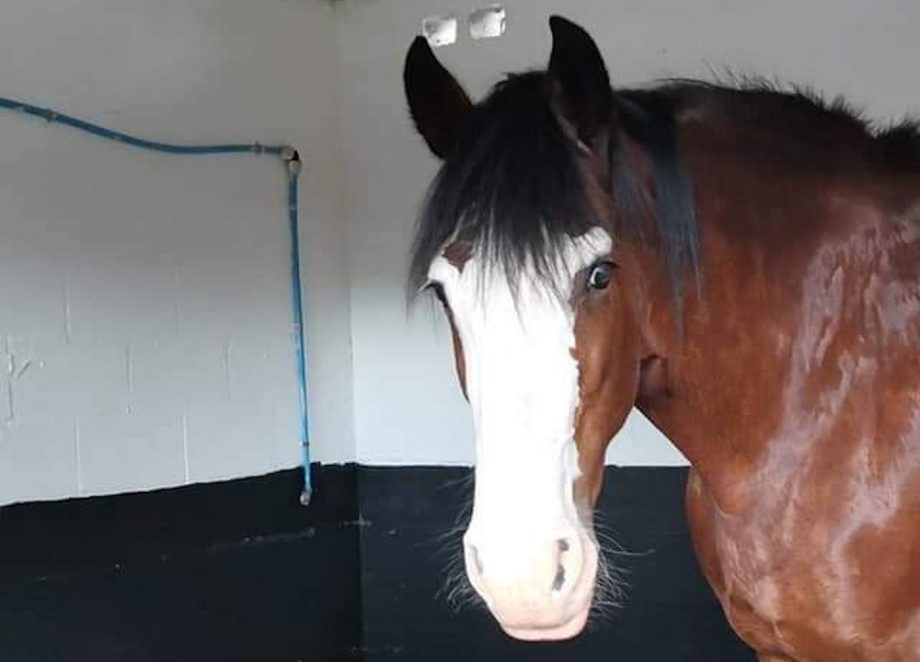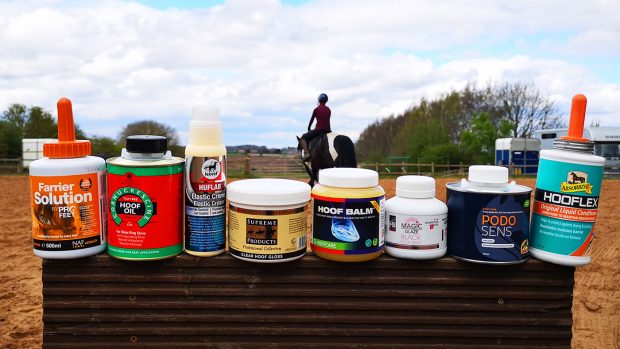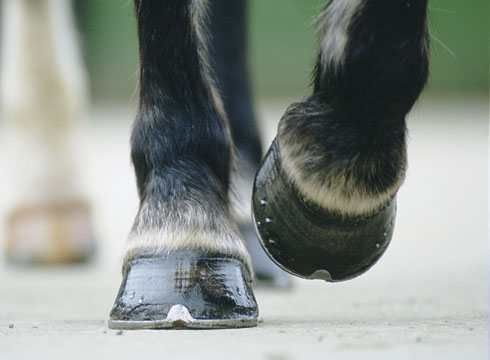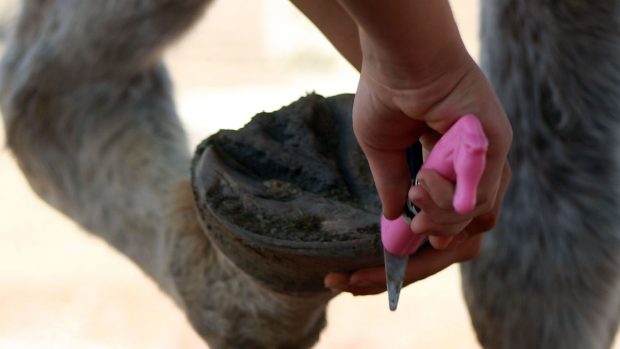A Clydesdale mare whose canker was cured thanks to top farriery – and 3D-printing technology – is now sound and happy, and enjoying her work again.
When Anne Wilson bought Freda, then 12, for Larkrigg Riding School near Kendal, three years ago, it was thought she was suffering from thrush. It became apparent her foot condition was the more serious canker, an infection that can easily be confused with thrush, and be very difficult to treat.
But thanks to the collaboration of the Northwest Equine Vets, farrier Richard Helliwell, 3D printing expert Andrew Allshorn and Anne, Freda’s canker was successfully treated.
Andrew told H&H his background is in art, he studied product design, and has decades of experience in 3D printing, founding his company 3D Squared in 2007.
“In 30 years, this is the most rewarding thing I’ve ever done,” he said. “Making race cars go faster, or doing something that hasn’t been done yet with cars or planes, is interesting but using the technology to make someone’s life better, human or animal, is what it’s all about.”
Andrew worked with the inventor of the technology, and would help businesses use it, including Formula 1 teams and aerospace companies.
He then moved his own machines into a facility near Larkrigg, and was introduced to Anne, Freda, Richard and the vet, to find out more about the issue.
“My first idea – which I’m going to look into more – was a plate with a removable cartridge, which I’d put silica gel in, to suck the moisture out,” he said. “In the end, we designed a customised plate but because Freda was in pain, she didn’t want anyone touching her feet. It’s also hard to scan animals because they don’t keep still, so we got her to stand on cardboard and drew round her feet, and I used that as a base.”
Andrew added that his experience with horses before he met Freda had involved drawing them, so “at first I put the frog in the wrong place; the farrier said ‘That’s really good but it’s back to front’!”
The plate was modified; first so it was harder under the frog and on the outside where the nails went in, to offer more support, but softer elsewhere so it would flex, so not cause pain if Freda trod on anything.
“One good thing about 3D printing is that you can have different properties in different areas,” Andrew said, adding that Richard also suggested the final modification, of small “wings” to hold the plate in place while he nailed the shoe on.
“I started with her in November last year, and on Christmas Eve, found out she was going to be ok,” Andrew said. “She’s fine now – and I’m going to learn to ride her!”

Andrew did not charge Anne for his work, as he “wanted to know if it would work”, and on being told he had never ridden, Anne promised to teach him on Freda, with the caveat that he would not ride before his wedding this year.
He has since been contacted by other owners with similar issues, and plans to market the product to help horses but “I won’t rip people off”.
“If you can do something good using this industry, that’s what it’s all about,” he said. “It wasn’t just me doing this; the farrier knew what he needed and I had a solution. It was a group of people collaborating, that’s the best thing about this.
“I talk to different industries and I don’t know what their problems are but there’s a chance that, if you bring them to me, we can have a go and try to fix them.”
Anne agreed that the positive outcome was a result of the teamwork.
“She’s got such a lovely nature and everyone adores her,” she told H&H, adding that Freda is well known locally, and people were pleased to hear she had recovered.
Richard explained that the 3D tech created the optimal conditions for the canker treatment to work effectively.
“Freda’s a nice mare and I knew from speaking to Anne that things were starting to look a bit bleak for her,” he said.
“Fixing sterile gauze containing the medication with tape simply wasn’t working because it was coming loose within hours. Gradually, despite everyone’s best efforts, the canker was taking hold and getting worse.
“Essentially, I wanted to find a way to allow the medication to work, which would mean using a pad on Freda’s foot to keep it both air- and watertight in an anaerobic environment.
“Unfortunately, there wasn’t anything on the market to fit her, and nothing even remotely the right shape that we could adapt to fit a heavy horse, so the only option was to try to create something bespoke.”
Richard said the pad, held in place by the shoe, had to be tough enough to take the mare’s weight but flexible enough to work with. It had to stay in place for weeks, while keeping the foot clean and dry.
“There was certainly a sigh of relief when the pad came off and we could see the difference it had made,” he said.
“Freda will need to keep the pad on for the rest of her life to keep the canker at bay, or environmental factors like wet ground will trigger the immune system and it will come back.
“But with the pad in place, there are no restrictions to what she – or other horses in the same situation – can go on to do.”
You might also be interested in:

Dealing with canker in the horse’s hoof
Canker has a distinctive aroma and is a serious condition of the horse's hoof that needs urgent attention

The Clydesdale horse: the pride of Scotland with both substance and style

Subscribe to Horse & Hound magazine today – and enjoy unlimited website access all year round
Horse & Hound magazine, out every Thursday, is packed with all the latest news and reports, as well as interviews, specials, nostalgia, vet and training advice. Find how you can enjoy the magazine delivered to your door every week, plus options to upgrade your subscription to access our online service that brings you breaking news and reports as well as other benefits.




